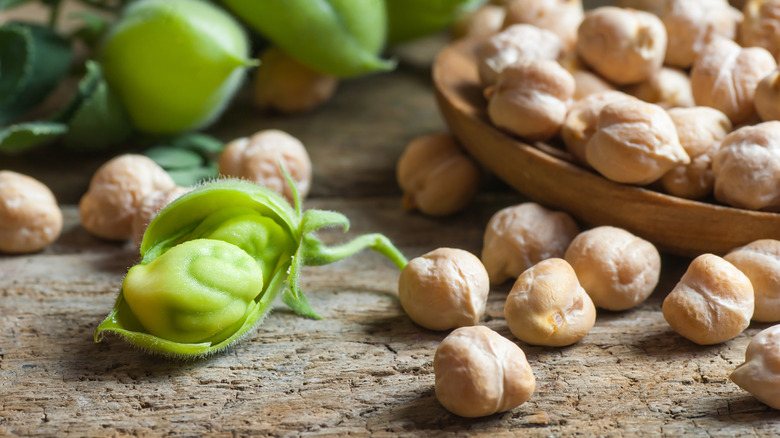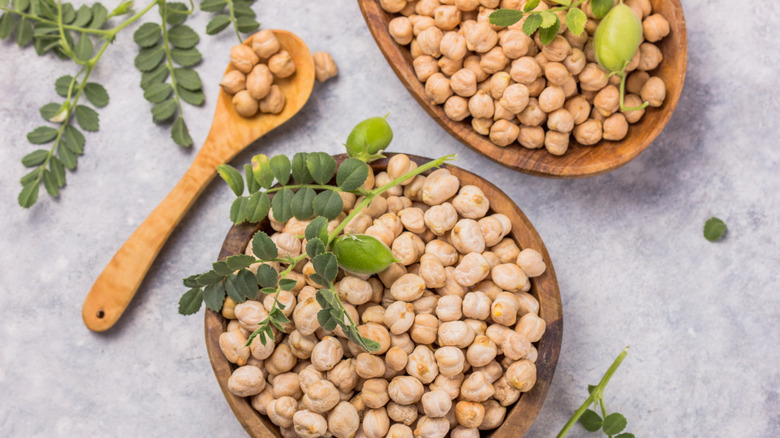Are Chickpeas And Garbanzo Beans The Same Thing?
There are two types of people — those who find themselves puzzled by the fact that chickpeas are often labeled as "garbanzo beans," and those who know that these are just two names for the same legume. No matter which camp you fall into, there's a lot to learn about chickpeas (or garbanzo beans, if you prefer) and where they got their names.
Whatever you call them, these bean-like nuggets are a beloved component of many dishes, from hearty plant-based burgers to crispy falafel. Rich in plant-based protein (like seitan or tempeh), they also boast high levels of beneficial fiber, folate, and manganese, making them a nutritious addition to kitchens around the world.
The way that chickpeas (aka garbanzo beans) are classified demystifies their naming a bit further. These plant foods fall under the broad legume umbrella, which includes edible seeds that come from pods. Underneath that is the more specific category of pulses, which are fibrous, low-fat legumes that are harvested as dried, mature seeds, and include beans, peas, and lentils. Despite one of their names, chickpeas are actually beans, not peas.
One pulse, many names
The word "chickpea" came to us through an age-old game of telephone. First came the Latin or scientific name for the plant – Cicer arietinum. The French called it 'pois chiche,' which made its way to England and was translated to the Old English term, 'chiche pease.' (Sound familiar?) On the other hand, the word 'garbanzo' has its roots in Old Spanish, where pea plants went by the name 'arvanço.' Then, in the Basque region, dry seeds are known as garbantzu, which also hints at its modern cousin. Because of these origins, you may hear 'garbanzo' used more in Spanish-speaking countries and in the western United States, where 'chickpea' is used elsewhere.
Chickpeas and garbanzo beans come from a specific variety known as Kabuli, which tend to be light-colored, round, and found throughout the United States and the Mediterranean. In places like Turkey and Italy, you might hear them called 'nohut' or 'ceci beans,' respectively. Another variety, the Desi type — more common in India and parts of the Middle East — is darker, more irregular in shape, and known as gram or chana. While their names may differ, the legume is essentially the same. All of these chickpea varieties can be used interchangeably to whip up homemade hummus, chana masala, or chickpea salad sandwiches.

